Hunger of Memory is the story of Mexican-American Richard Rodriguez, who begins his schooling in Sacramento, California, knowing just 50 words of English, and concludes his university studies in the stately quiet of the reading room of the British Museum.
Here is the poignant journey of a “minority student” who pays the cost of his social assimilation and academic success with a painful alienation — from his past, his parents, his culture — and so describes the high price of “making it” in middle-class America.
Provocative in its positions on affirmative action and bilingual education, Hunger of Memory is a powerful political statement, a profound study of the importance of language ... and the moving, intimate portrait of a boy struggling to become a man.
It is November 25, 1960, and three beautiful sisters have been found near their wrecked Jeep at the bottom of a 150-foot cliff on the north coast of the Dominican Republic. The official state newspaper reports their deaths as accidental. It does not mention that a fourth sister lives. Nor does it explain that the sisters were among the leading opponents of Gen. Rafael Leonidas Trujillo's dictatorship. It doesn't have to. Everybody knows of Las Mariposas: The Butterflies.
In this extraordinary novel, the voices of all four sisters Minerva, Patria, Maria Teresa, and the survivor, Dede speak across the decades to tell their own stories, from hair ribbons and secret crushes to gunrunning and prison torture, and to describe the everyday horrors of life under Trujillo s rule. Through the art and magic of Julia Alvarez s imagination, the martyred Butterflies live again in this novel of courage and love, and the human cost of political oppression.
Luis Alberto Urrea's first book, Across the Wire: Life and Hard Times on the Mexican Border, was a haunting and unprecedented look at what life is like for those living on the Mexican side of the border, eking out only the barest of lives not far from the white sands and coral reefs of Southern California. His poignant, widely acclaimed account of the struggle of these people to survive amid the abject poverty, unsanitary living conditions, and legal and political chaos that reign in the Mexican borderlands vividly illustrated why so many are forced to make the treacherous and illegal journey "across the wire" into the United States.
Written with the same unflagging curiosity, compassion, mordant wit, and novelistic sense of detail that made Across the Wire "a work of investigative reporting that is also a bittersweet song of human anguish" (Los Angeles Times), By the Lake of Sleeping Children explores the post-NAFTA and Proposition 187 border purgatory of garbage pickers and dump dwellers, gawking tourists and relief workers, fearsome coyotes and their desperate clientele. In sixteen indelible portraits, Urrea illuminates the horrors and the simple joys of people trapped between the two worlds of Mexico and the United States - and ignored by both. The result is a startling and memorable work of first-person reportage.
Sometime in April 2014, somewhere in a hospital in California, a Latino child tipped the demographic scales as Latinos displaced non-Hispanic whites as the largest racial/ethnic group in the state. So, one-hundred-sixty-six years after the Treaty of Guadalupe Hidalgo brought the Mexican province of Alta California into the United States, Latinos once again became the largest population in the state. Surprised? Texas will make the same transition sometime before 2020.
When that happens, America's two most populous states, carrying the largest number of Electoral College votes, will be Latino. New Mexico is already there. New York, Florida, Arizona, and Nevada are shifting rapidly. Latino populations since 2000 have doubled in Alabama, Arkansas, Georgia, and South Dakota. The US is undergoing a substantial and irreversible shift in its identity.
So, too, are the Latinos who make up these populations. Matt Barreto and Gary M. Segura are the country's preeminent experts in the shape, disposition, and mood of Latino America. They show the extent to which Latinos have already transformed the US politically and socially, and how Latino Americans are the most buoyant and dynamic ethnic and racial group, often in quite counterintuitive ways. Latinos' optimism, strength of family, belief in the constructive role of government, and resilience have the imminent potential to reshape the political and partisan landscape for a generation and drive the outcome of elections as soon as 2016.
"I knew she'd be trouble."
So quipped Antonin Scalia about Sonia Sotomayor at the Supreme Court’s annual end-of-term party in 2010. It’s usually the sort of event one would expect from such a grand institution, with gentle parodies of the justices performed by their law clerks, but this year Sotomayor decided to shake it up—flooding the room with salsa music and coaxing her fellow justices to dance. It was little surprise in 2009 that President Barack Obama nominated a Hispanic judge to replace the retiring justice David Souter. The fact that there had never been a nominee to the nation’s highest court from the nation’s fastest growing minority had long been apparent. So the time was ripe—but how did it come to be Sonia Sotomayor? In Breaking In: The Rise of Sonia Sotomayor and the Politics of Justice, the veteran journalist Joan Biskupic answers that question.
This is the story of how two forces providentially merged—the large ambitions of a talented Puerto Rican girl raised in the projects in the Bronx and the increasing political presence of Hispanics, from California to Texas, from Florida to the Northeast—resulting in a historical appointment. And this is not just a tale about breaking barriers as a Puerto Rican. It’s about breaking barriers as a justice. Biskupic, the author of highly praised judicial biographies of Justice Antonin Scalia and Justice Sandra Day O’Connor, now pulls back the curtain on the Supreme Court nomination process, revealing the networks Sotomayor built and the skills she cultivated to go where no Hispanic has gone before. We see other potential candidates edged out along the way. And we see how, in challenging tradition and expanding our idea of a justice (as well as expanding her public persona), Sotomayor has created tension within and without the court’s marble halls.
As a Supreme Court justice, Sotomayor has shared her personal story to an unprecedented degree. And that story—of a Latina who emerged from tough times in the projects not only to prevail but also to rise to the top—has even become fabric for some of her most passionate comments on matters before the Court. But there is yet more to know about the rise of Sonia Sotomayor. Breaking In offers the larger, untold story of the woman who has been called "the people’s justice."
Latino Americans chronicles the rich and varied history of Latinos, who have helped shaped our nation and have become, with more than fifty million people, the largest minority in the United States. This companion to the landmark PBS miniseries vividly and candidly tells how the story of Latino Americans is the story of our country.
Author and acclaimed journalist Ray Suarez explores the lives of Latino American men and women over a five-hundred-year span, encompassing an epic range of experiences from the early European settlements to Manifest Destiny; the Wild West to the Cold War; the Great Depression to globalization; and the Spanish-American War to the civil rights movement.
Latino Americans shares the personal struggles and successes of immigrants, poets, soldiers, and many others—individuals who have made an impact on history, as well as those whose extraordinary lives shed light on the times in which they lived, and the legacy of this incredible American people.
Here is the poignant journey of a “minority student” who pays the cost of his social assimilation and academic success with a painful alienation — from his past, his parents, his culture — and so describes the high price of “making it” in middle-class America.
Provocative in its positions on affirmative action and bilingual education, Hunger of Memory is a powerful political statement, a profound study of the importance of language ... and the moving, intimate portrait of a boy struggling to become a man.
It is November 25, 1960, and three beautiful sisters have been found near their wrecked Jeep at the bottom of a 150-foot cliff on the north coast of the Dominican Republic. The official state newspaper reports their deaths as accidental. It does not mention that a fourth sister lives. Nor does it explain that the sisters were among the leading opponents of Gen. Rafael Leonidas Trujillo's dictatorship. It doesn't have to. Everybody knows of Las Mariposas: The Butterflies.
In this extraordinary novel, the voices of all four sisters Minerva, Patria, Maria Teresa, and the survivor, Dede speak across the decades to tell their own stories, from hair ribbons and secret crushes to gunrunning and prison torture, and to describe the everyday horrors of life under Trujillo s rule. Through the art and magic of Julia Alvarez s imagination, the martyred Butterflies live again in this novel of courage and love, and the human cost of political oppression.
Luis Alberto Urrea's first book, Across the Wire: Life and Hard Times on the Mexican Border, was a haunting and unprecedented look at what life is like for those living on the Mexican side of the border, eking out only the barest of lives not far from the white sands and coral reefs of Southern California. His poignant, widely acclaimed account of the struggle of these people to survive amid the abject poverty, unsanitary living conditions, and legal and political chaos that reign in the Mexican borderlands vividly illustrated why so many are forced to make the treacherous and illegal journey "across the wire" into the United States.
Written with the same unflagging curiosity, compassion, mordant wit, and novelistic sense of detail that made Across the Wire "a work of investigative reporting that is also a bittersweet song of human anguish" (Los Angeles Times), By the Lake of Sleeping Children explores the post-NAFTA and Proposition 187 border purgatory of garbage pickers and dump dwellers, gawking tourists and relief workers, fearsome coyotes and their desperate clientele. In sixteen indelible portraits, Urrea illuminates the horrors and the simple joys of people trapped between the two worlds of Mexico and the United States - and ignored by both. The result is a startling and memorable work of first-person reportage.
Sometime in April 2014, somewhere in a hospital in California, a Latino child tipped the demographic scales as Latinos displaced non-Hispanic whites as the largest racial/ethnic group in the state. So, one-hundred-sixty-six years after the Treaty of Guadalupe Hidalgo brought the Mexican province of Alta California into the United States, Latinos once again became the largest population in the state. Surprised? Texas will make the same transition sometime before 2020.
When that happens, America's two most populous states, carrying the largest number of Electoral College votes, will be Latino. New Mexico is already there. New York, Florida, Arizona, and Nevada are shifting rapidly. Latino populations since 2000 have doubled in Alabama, Arkansas, Georgia, and South Dakota. The US is undergoing a substantial and irreversible shift in its identity.
So, too, are the Latinos who make up these populations. Matt Barreto and Gary M. Segura are the country's preeminent experts in the shape, disposition, and mood of Latino America. They show the extent to which Latinos have already transformed the US politically and socially, and how Latino Americans are the most buoyant and dynamic ethnic and racial group, often in quite counterintuitive ways. Latinos' optimism, strength of family, belief in the constructive role of government, and resilience have the imminent potential to reshape the political and partisan landscape for a generation and drive the outcome of elections as soon as 2016.
"I knew she'd be trouble."
So quipped Antonin Scalia about Sonia Sotomayor at the Supreme Court’s annual end-of-term party in 2010. It’s usually the sort of event one would expect from such a grand institution, with gentle parodies of the justices performed by their law clerks, but this year Sotomayor decided to shake it up—flooding the room with salsa music and coaxing her fellow justices to dance. It was little surprise in 2009 that President Barack Obama nominated a Hispanic judge to replace the retiring justice David Souter. The fact that there had never been a nominee to the nation’s highest court from the nation’s fastest growing minority had long been apparent. So the time was ripe—but how did it come to be Sonia Sotomayor? In Breaking In: The Rise of Sonia Sotomayor and the Politics of Justice, the veteran journalist Joan Biskupic answers that question.
This is the story of how two forces providentially merged—the large ambitions of a talented Puerto Rican girl raised in the projects in the Bronx and the increasing political presence of Hispanics, from California to Texas, from Florida to the Northeast—resulting in a historical appointment. And this is not just a tale about breaking barriers as a Puerto Rican. It’s about breaking barriers as a justice. Biskupic, the author of highly praised judicial biographies of Justice Antonin Scalia and Justice Sandra Day O’Connor, now pulls back the curtain on the Supreme Court nomination process, revealing the networks Sotomayor built and the skills she cultivated to go where no Hispanic has gone before. We see other potential candidates edged out along the way. And we see how, in challenging tradition and expanding our idea of a justice (as well as expanding her public persona), Sotomayor has created tension within and without the court’s marble halls.
As a Supreme Court justice, Sotomayor has shared her personal story to an unprecedented degree. And that story—of a Latina who emerged from tough times in the projects not only to prevail but also to rise to the top—has even become fabric for some of her most passionate comments on matters before the Court. But there is yet more to know about the rise of Sonia Sotomayor. Breaking In offers the larger, untold story of the woman who has been called "the people’s justice."
Latino Americans chronicles the rich and varied history of Latinos, who have helped shaped our nation and have become, with more than fifty million people, the largest minority in the United States. This companion to the landmark PBS miniseries vividly and candidly tells how the story of Latino Americans is the story of our country.
Author and acclaimed journalist Ray Suarez explores the lives of Latino American men and women over a five-hundred-year span, encompassing an epic range of experiences from the early European settlements to Manifest Destiny; the Wild West to the Cold War; the Great Depression to globalization; and the Spanish-American War to the civil rights movement.
Latino Americans shares the personal struggles and successes of immigrants, poets, soldiers, and many others—individuals who have made an impact on history, as well as those whose extraordinary lives shed light on the times in which they lived, and the legacy of this incredible American people.
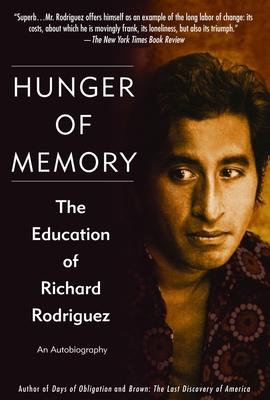
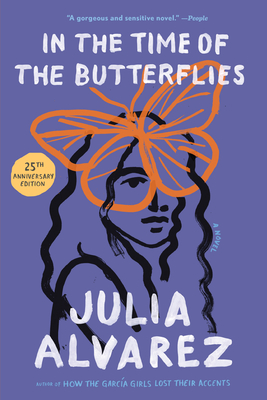
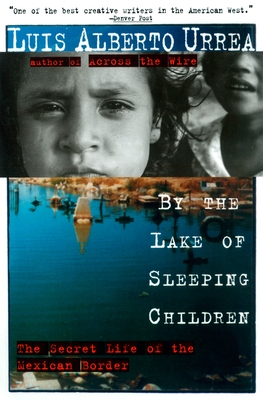

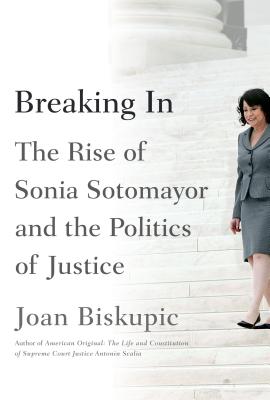
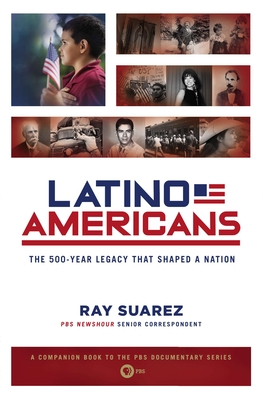
No comments:
Post a Comment